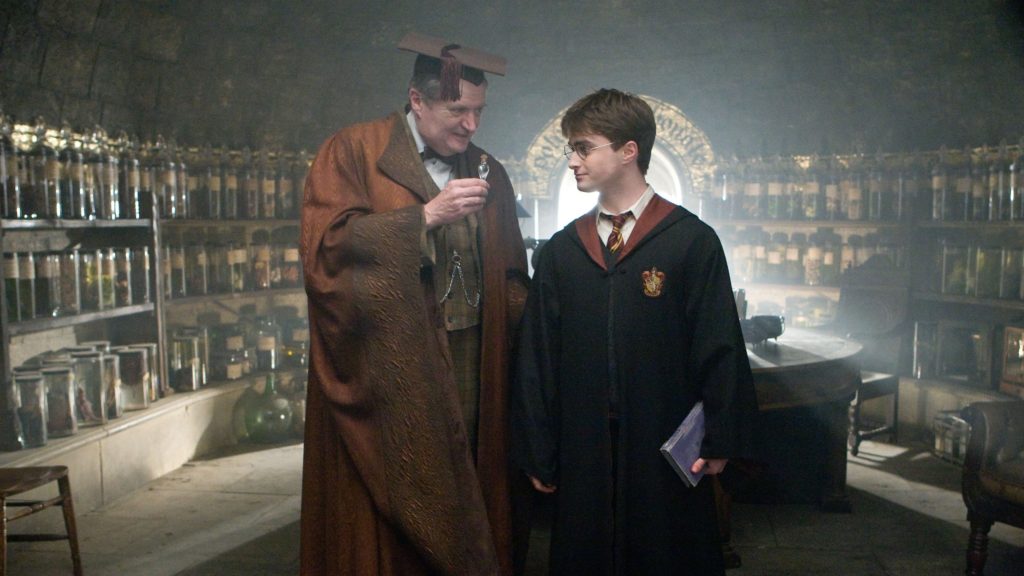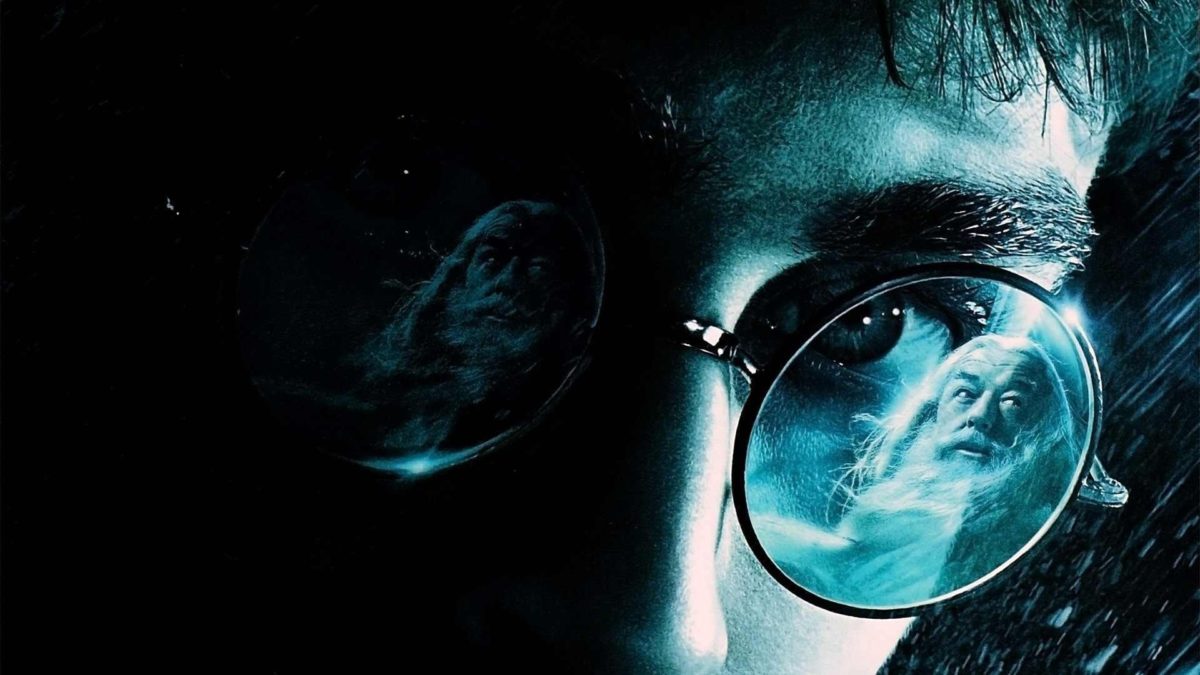Harry Potter and the Raging Hormones
The sixth Harry Potter film is the beginning of the end of the series. It’s the last proper “normal” Harry Potter film — featuring boarding school shenanigans and a year-long mystery — but also the transition to the two-part epic finale.
Half-Blood Prince is one of the more uneven Harry Potter films, with some terrific highs but also some brutal lows. It continues a pattern of this rewatch of the series where I am higher on the odd-numbered entries (Stone, Prisoner, Order) than the even-numbered ones (Chamber, Goblet).
Let’s start with what works: The final half-hour of this is tense and terrific. It features the signature twist of a series that has no shortage of great ones, that being the *spoilers for the best-selling book series of all time* murder of Professor Dumbledore by Professor Snape. It pays off on six books of Harry’s emotional baggage with the bullying Snape and strips yet another layer of armor off of Harry and his support structures as he prepares for his final battle with evil.
(Fun fact: JK Rowling was obsessed with medieval alchemy when she wrote the Harry Potter books. In alchemical tradition, a “prima materia” turns to gold only after it undergoes a transition from black to white to red. Who does Harry lose in the final three stories of the series? Sirius Black, Albus — Latin for “white” — Dumbledore, and the red-haired Fred Weasley. Plenty of fans, myself included, believe Rowling initially planned to kill Rubeus — Latin for “red” — Hagrid in the final Harry Potter book when she first outlined the series and named the characters, but backed away from the idea when she decided Hagrid’s symbolic role in the saga’s conclusion would be different.)

There’s another really fascinating structural subversion in the books that simply doesn’t and (possibly couldn’t) exist in the film. After five books of Harry failing to see important details of whatever mystery afflicts Hogwarts until the final chapters, and incorrectly blaming Snape or Draco Malfoy for villainy they were not involved in, over and over, the table turns: His instincts of danger are in fact quite correct where everyone else is wrong, and Snape and Malfoy are the actual culprits this time. They become, in this story, the red herring red herrings, a clever, self-referential double twist that turns readers’/viewers’ expectation of their repeated innocence on its head. (Though keen observers will note that the final movie undercuts this meta-twist by making Dumbledore and Snape one step even further ahead of Harry.)
Half-Blood Prince is also, against all expectations, the funniest Harry Potter film. There are some genuinely hilarious one-liners and gags, the best of which is Ron Weasley’s reaction to inadvertently consuming a love potion and subsequently mooning around. Harry’s quasi-stoned encounter with liquid luck is not far behind. The tone of the cheesy teen romance is played just right, to my taste: taken seriously, but not too seriously. I especially love the adults’ confusion toward the teen characters’ raging hormones.
Last highlight before I pivot: It’s fascinating and appropriately grim to see a wizarding world torn asunder by violence and chaos. Half-Blood Prince effectively captures the cultural sense of dread that floods its world as something dark rises to power that nobody can stop despite everyone wanting to. (See, e.g.: COVID, climate change, and school shootings.)

As compelling as the film’s good stuff is, there’s also plenty that doesn’t quite work.
Much of why I love the sixth Harry Potter book has been neutered or discarded in the film. The depiction of Tom Riddle’s psychopathic descent into villainy is shallow here. We don’t get a proper sense of his humanity gradually stripped away by narcissism and personal demons. Just a few creepy scenes of a young baddie.
It’s also hard to overstate just how much of a missed opportunity the character of Ginny Weasley is as a romantic foil for Harry. Bonnie Wright and Daniel Radcliffe have approximately zero chemistry, and the film gives us no real reason for them to hook up. Everything potentially interesting about Ginny as a partner to Harry is reduced to some failed goo-goo eyes. It’s a major letdown for a long-teased and central plot point of the series: Harry’s romantic destiny. (The obvious rewrite is to plug in Luna Lovegood as the romantic interest of Harry’s. Damn would that have been fun.)
Half-Blood Prince is also the most tonally wobbly of the David Yates movies in the series. I know some people like it for this reason: it lets the teen comedy and romance intermingle with the gloomy end-of-the-world, epic saga stuff. But for me, the various pieces of the story just don’t fit together like they should.
No moment epitomizes the weird tonal whiplash of the film than the scene right after Ron recovers from his love potion mishap and accidentally ingests some life-threatening poison. Ron’s pratfall from the poison has the cadence of punchline, only for the film to cut to him suffocating and foaming at the mouth. I remember in theaters, the moment got a laugh that awkwardly turned to silence as Ron nearly died.
From a technical perspective, there’s not much to add to this one that hasn’t been true for the past couple entries: The colors remain steely, almost to the point of exhaustion. The acting remains good, with Tom Felton finally getting to do some interesting work as Draco. The pacing and editing are fine; rarely has 2.5 hours flowed so well. Some well-done CGI moments in the last half hour create some horror vibes, too.
Thankfully, the film’s core material is pretty rich and good, the story largely well-told. It’s a fine and watchable movie. But the more times I see Harry Potter and the Half-Blood Prince, the more I wish it could have just been a little bit better.
Is It Good?
Good (5/8)
Dan is the founder and head critic of The Goods. Follow Dan on Letterboxd. Join the Discord for updates and discussion.

